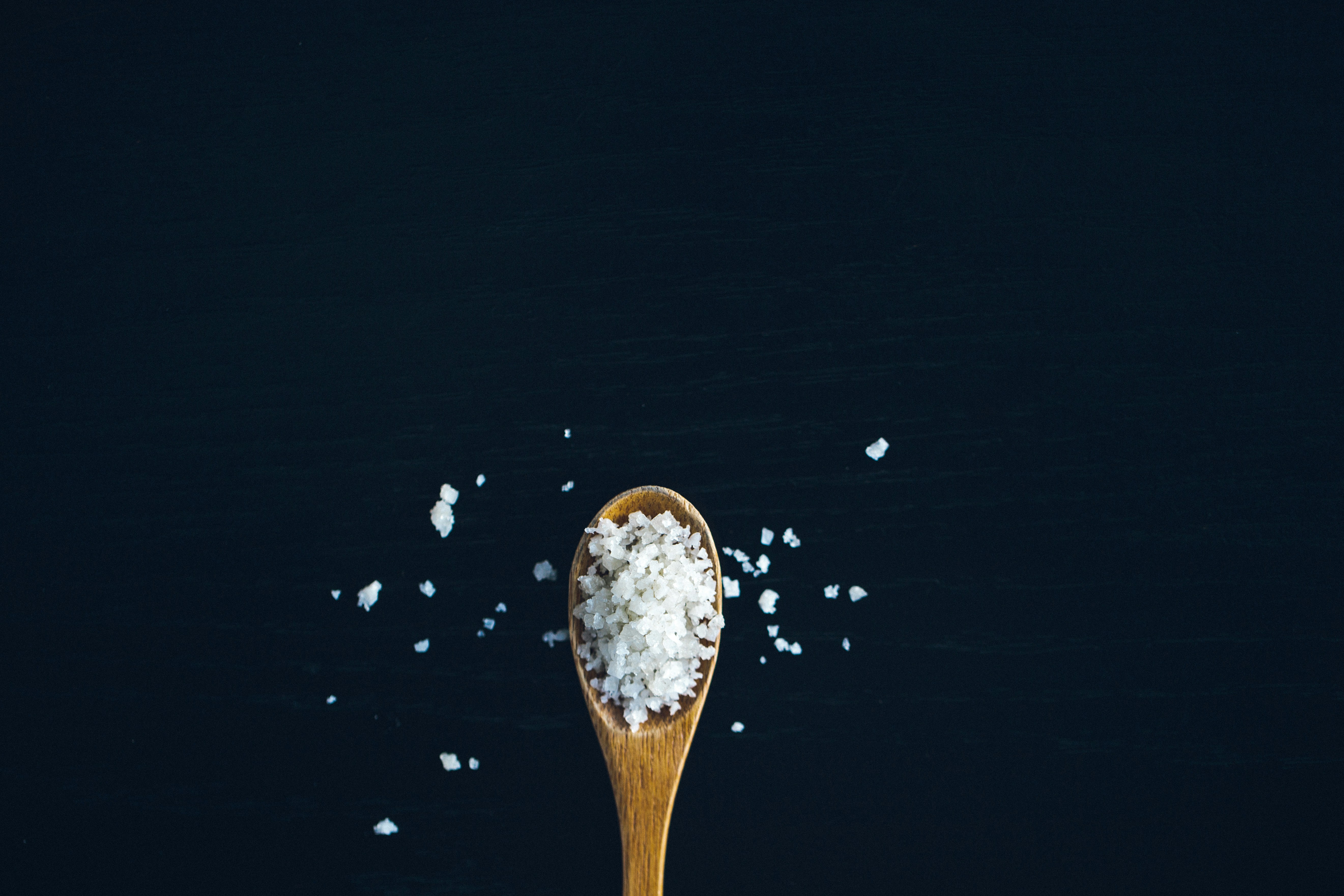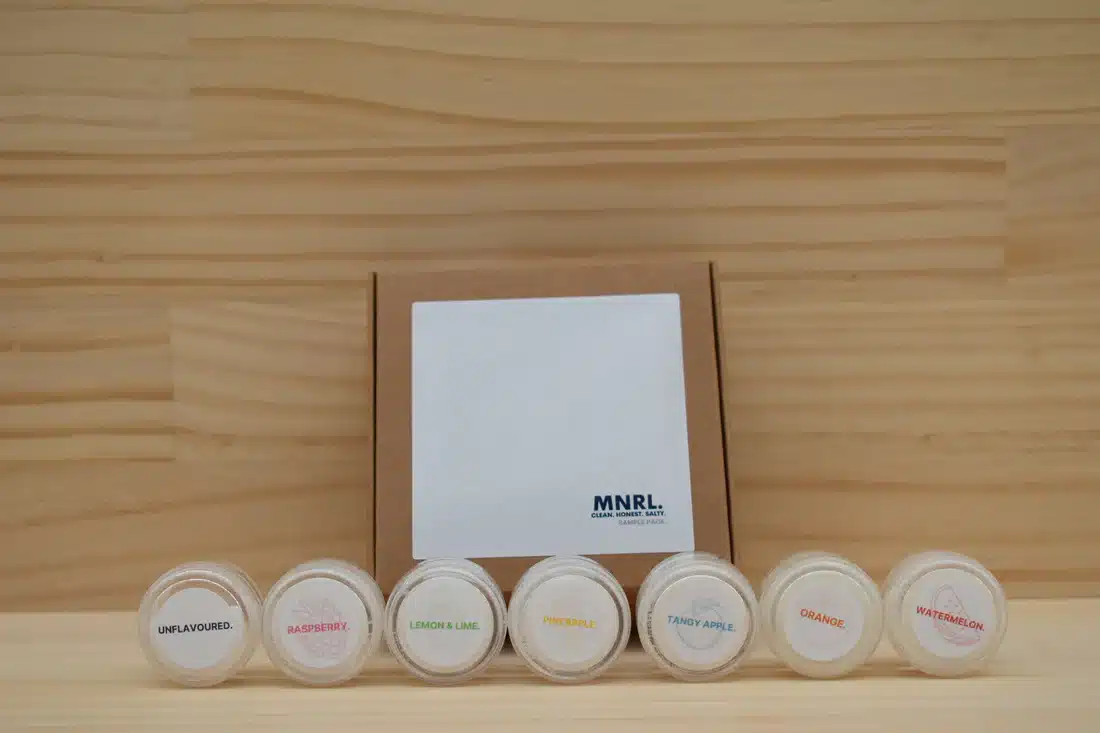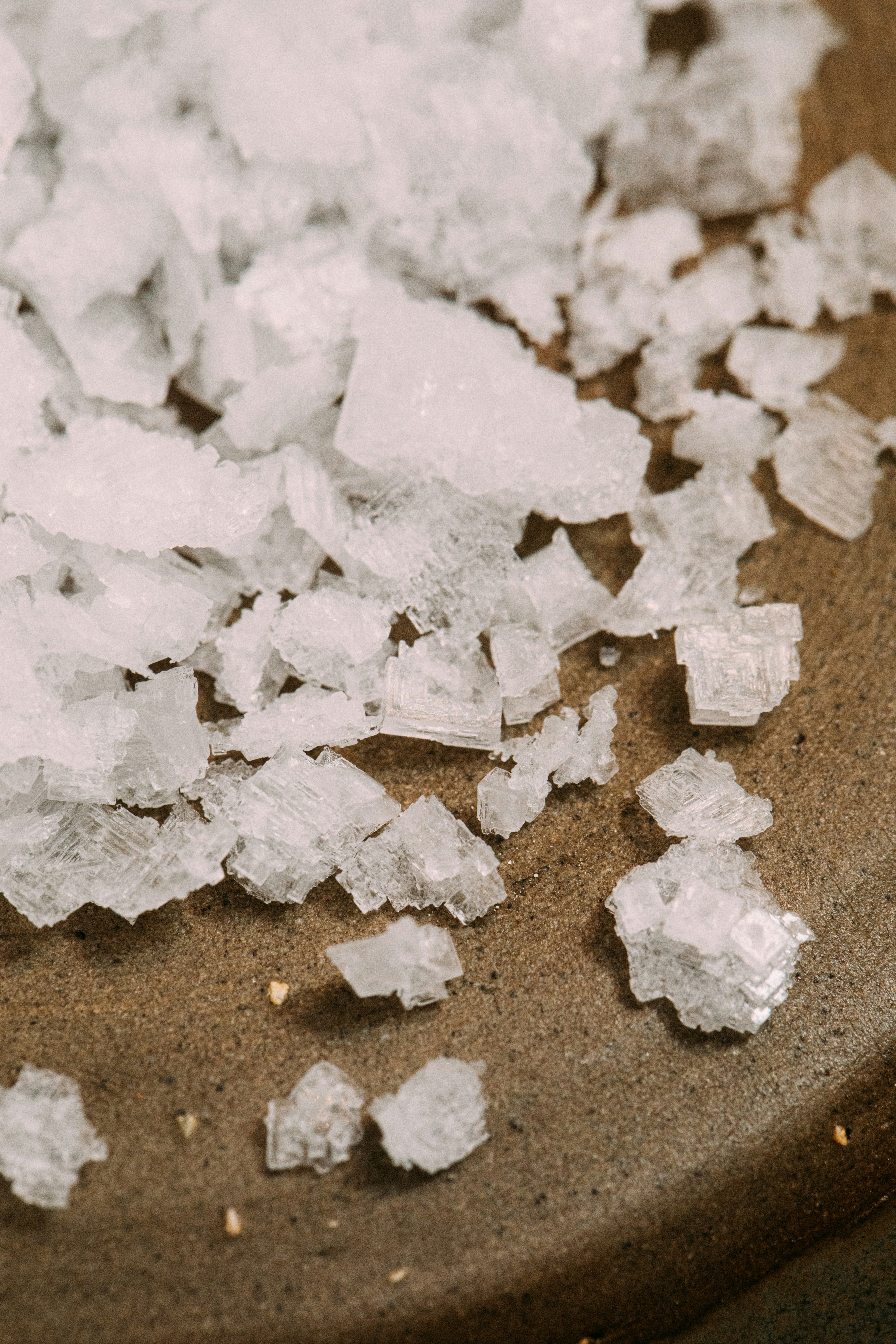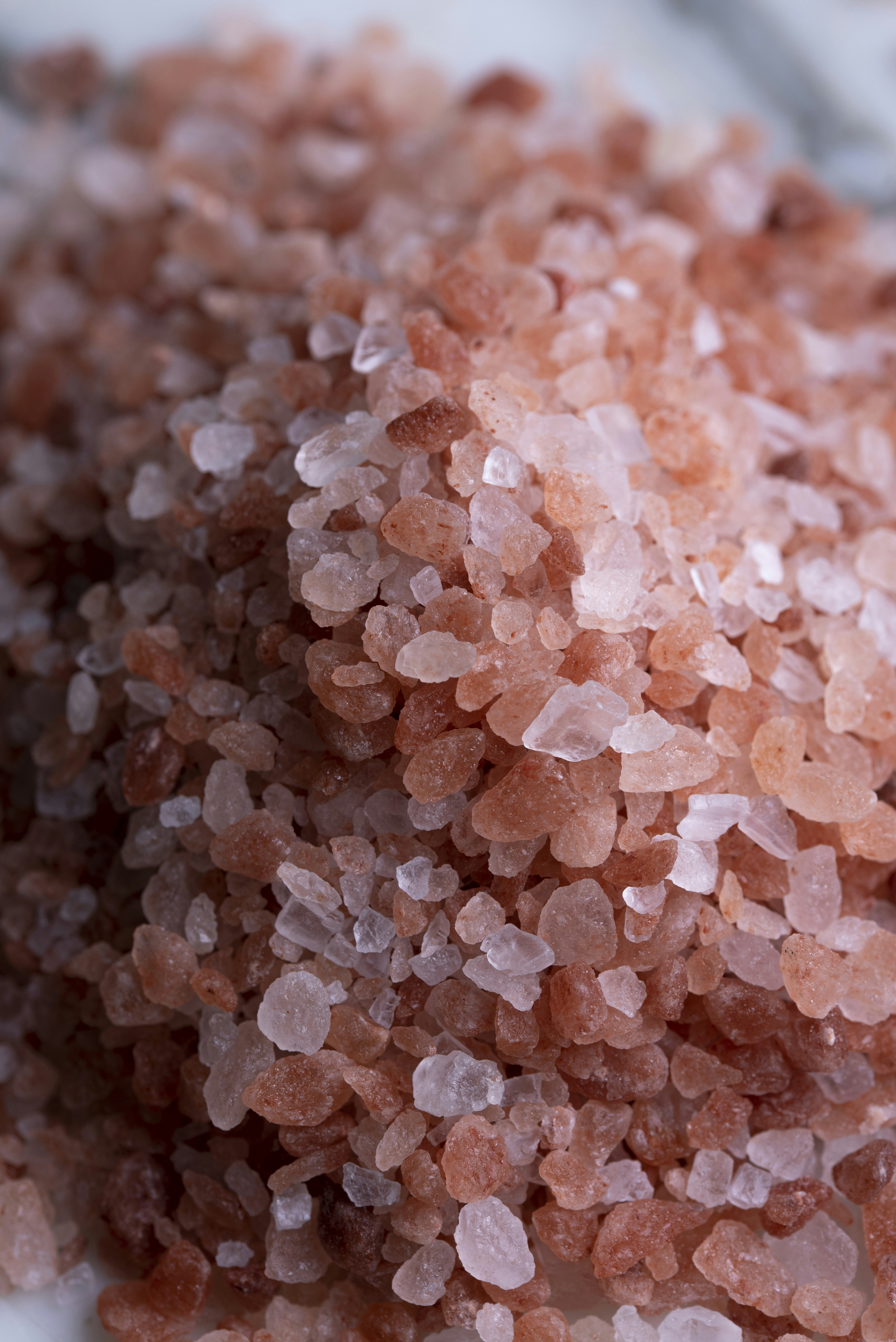“Proper electrolyte supplementation, especially with sodium, has drastically improved my performance and comfort. The shift was remarkable once I knew what my body needed.”
Let’s delve into why supplementing with salt and how it differs from just consuming your typical electrolyte drink. Your performance, comfort, and overall physical well-being could very well depend on this crucial knowledge.

Electrolyte Supplementation for Everyday Fitness Enthusiasts
For those of us immersed in the whirlpool of daily workouts, fitness challenges, and the ever-elusive pursuit of personal bests, there’s a secret weapon waiting to be embraced: electrolyte supplementation. We’ve all been there – the unexpected muscle cramp mid-sprint, the post-spin class fatigue, or the relentless thirst that water alone can’t quench. But have you ever stopped to wonder why?
Electrolytes are our bodies’ unsung symphony conductors, harmonising muscle contractions, nerve impulses, and fluid balance. When we push the limits of our physical endurance, especially during intense exercises like running, cycling, or weightlifting, we lose electrolytes through sweat. This loss can disrupt our body’s natural equilibrium, leading to cramps, fatigue, and decreased performance. It’s not just about staying hydrated; it’s about staying balanced.
Enter electrolyte supplements, the elixirs that can transform your hydration strategy. Unlike traditional sports drinks, which often contain sugars and artificial ingredients, electrolyte supplements like LMNT or MNRL offer a purer solution. These products typically contain essential minerals such as sodium, potassium, and magnesium, crucial for maintaining optimal muscle function and stamina.
Keen to try out some MNRL?
Get salty. Visit MNRL to order some Electrolyte Goodness and get 10% off with our exclusive code – THEBLOKE10 – just enter it at checkout.

Imagine striding into your next workout session, muscles primed and ready, knowing that your electrolytes are in perfect harmony. That’s the kind of empowerment electrolyte supplementation offers. It’s more than just a drink; it’s a subtle recalibration of your body’s internal mechanisms, ensuring every contraction, every breath, and every drop of sweat is optimally managed. Whether rolling on the mats in a heated jiu-jitsu match or fine-tuning your aim at the shooting range, the balanced mineral support can make all the difference.
But here’s where the plot thickens – it’s not just about preventing cramps. Supplementing with electrolytes can enhance your overall energy levels, support faster recovery, and even improve cognitive function during prolonged physical activities. The journey to peak fitness isn’t just about raw effort; it’s about smart effort, and incorporating electrolyte supplements is a step toward that nuanced mastery of your body’s needs.
So, next time you’re gearing up for a hardcore session, remember water is essential, but water enriched with the right electrolytes can be transformational. Your muscles will thank you, your performance will skyrocket, and those pesky cramps? They’ll become tales of the past. Embrace the power of electrolyte supplementation and let your fitness routine reach new heights.

Electrolyte Supplementation for Older Adults: Special Considerations
As we age, our body’s demand for electrolytes like sodium, potassium, and magnesium doesn’t just wane – it becomes more critical than ever. Older adults often face unique challenges when it comes to maintaining electrolyte balance. Reduced kidney function, changes in dietary habits, and a decreased feeling of thirst can all contribute to an increased risk of electrolyte imbalances. When you add the routine use of medications such as diuretics, which can further deplete essential minerals, the situation becomes even more delicate.
Moreover, the sensation of thirst tends to diminish with age, often leading to inadequate fluid intake. This can sometimes cause chronic dehydration, exacerbating the imbalance of electrolytes. Imagine negotiating a tricky staircase with a sense of balance that’s just a tad off – every step becomes fraught with danger. Similarly, electrolyte disruptions can upset the fine equilibrium that keeps muscle function, heart rhythm, and nerve transmission in sync.
High-intensity exercise can increase electrolyte loss by 30%
But there’s hope. Integrating an electrolyte supplement into the daily routine can bring remarkable relief. Unlike the sugar-laden sports drinks often marketed to younger athletes, these supplements focus on delivering key minerals without unnecessary additives. For instance, a product like MNRL offers a well-rounded electrolyte profile that ensures older adults receive ample sodium, potassium, and magnesium – all in a sugar-free formulation.
Consider magnesium, often dubbed the “relaxation mineral,” which is pivotal in warding off muscle cramps that can otherwise make simple actions like getting out of bed or lifting a grocery bag painful and laborious. Likewise, potassium is indispensable for heart health and muscle function, which is vital in ensuring that every heartbeat and muscle contraction occurs seamlessly.
Addressing these needs isn’t merely about adding supplements but recognising the unique physiological landscape of older adults. Tailoring hydration and nutrient strategies to meet these requirements can transform well-being, turning the autumn into a season of vitality rather than decline.

The Role of Sodium in Electrolyte Balance and Muscle Function
Imagine your body as a finely tuned orchestra. Each electrolyte plays a unique instrument, harmonising to create a symphony of peak performance. Sodium, that unsung maestro, ensures the ensemble stays in perfect rhythm. Crucial for maintaining the balance of fluids in and around cells, sodium facilitates nerve impulses and muscle contractions, making it indispensable for effective physical function.
Without sufficient sodium, our symphony falls apart. The brain’s signals to muscles falter, leading to cramps, spasms, and a general performance loss. Interestingly, studies have shown that athletes who maintain a balanced sodium intake stay hydrated more effectively and recover more swiftly from the rigours of exertion.
But it’s not just about reaching for the salt shaker – it’s about understanding the nuanced dance between sodium and its fellow electrolytes. For instance, potassium balances sodium’s effects by promoting muscle relaxation and fluid balance. When these elements work in concert, they elevate your body’s ability to endure and excel, which is particularly beneficial for those sweaty sessions on the mat or behind a precision trigger.
Ensuring an adequate supply of sodium through supplementation, especially for individuals engaging in high-intensity activities, is akin to fine-tuning your instrument before a concert. An imbalance can be as disruptive as an out-of-tune violin in a string quartet, whereas the right amount of sodium assures that your muscles respond fluidly and consistently to every command.

Debunking Myths About Salt and Health
Many people harbour a deep-seated fear of salt, envisioning it as a nefarious villain plotting to exacerbate cardiovascular diseases and hypertension. Considering the copious warnings splashed across media and medical advisories, it’s no wonder. Yet, as with many nutritional narratives, the truth is far more nuanced, draped in shades of grey rather than stark black and white.
Firstly, it’s imperative to delineate between different types of sodium consumption. Consuming large quantities of highly processed foods, often laden with excessive, unhealthy salts, can indeed invite health complications. However, this is a far cry from the responsible use of natural, mineral-rich salts to supplement one’s diet, especially for those engaging in high-intensity activities or enduring sweat-drenched workouts.
Electrolytes, chiefly sodium, potassium, and magnesium, play pivotal roles in maintaining fluid balance, nerve function, and muscle health. The elegant symphony of these minerals enables our muscles to contract and relax effortlessly, warding off those dreaded cramps that strike like an unexpected storm. While mainstream health advice often shuns sodium, recent research suggests that the judicious intake of sodium, particularly for active individuals, is beneficial and essential.
Sodium is the most abundant electrolyte lost in sweat
Take, for example, the practice of adding a dash of salt to water or consuming electrolyte supplements. This isn’t mere folklore or the latest fad; it’s grounded in biochemical necessity. Drinking plain water, while intuitively satisfying, especially after a gruelling session, may dilute electrolytes, exacerbating the cramps you’re attempting to avoid. Conversely, electrolyte-enhanced beverages help replenish these crucial minerals more effectively, mirroring the body’s intricate hydration needs and promoting optimal muscle function.
The revelations are clear: electrolytes outshine pure water in preventing exercise-induced muscle cramps. Such findings encourage a re-evaluation of ingrained assumptions about salt and health. They invite us to elevate our understanding and sculpt our dietary habits more precisely, moving beyond the one-size-fits-all approach to health narratives.
Ultimately, the villainisation of salt lacks context and depth. It’s time to embrace a balanced, informed perspective, recognising that salt, in its rightful place, can be a hero in our pursuit of peak performance and well-being. The nuanced orchestration of sodium and other electrolytes can usher in relief and a renaissance in how we fuel our bodies, giving us the stamina, energy, and resilience we need to conquer our daily tasks and our loftiest aspirations.

Why I Switched from LMNT to MNRL: A Personal Story
It started with an all-too-familiar scenario: fine motor tasks that should have been straightforward, like pulling a rifle trigger, became a source of intense discomfort. Cramping fingers, an unwelcome guest at a moment demanding precision. My quest for a solution led me to electrolyte supplementation, specifically LMNT. Here’s where the plot thickens. LMNT, a blend of electrolytes that skilfully balanced sodium, potassium, and magnesium, was a game-changer. My hand cramps became a phantom of the past, and even during intense Jiu-Jitsu rolling sessions, the menacing spectre of muscle cramps faded into the background.
That was until shipping logistics threw a wrench into my regimen. When LMNT stopped shipping to New Zealand, the hunt was on for a worthy successor. Enter MNRL. Transitioning to MNRL was more than a matter of necessity—it was a seamless continuation of my journey to optimal electrolyte balance. MNRL, too, embraced the power of sodium, but its unique formulation was tailored to the needs of Kiwis like me. It wasn’t just about replacing one brand with another; it was about finding a local hero who could step into the shoes of a former champion.
But why not just down gallons of electrolyte-infused water, you might ask? The devil, as they say, is in the details. Drinking electrolytes provides a mix, but the sodium—yes, plain old table salt—often plays the starring role in warding off cramps. Sodium is critical for nerve function and muscle contraction. Pure water, though refreshing, can dilute the body’s sodium reserves, especially during intense physical exertion or heat. This dilution can lead to an imbalance, making cramps more likely.
Switching to MNRL wasn’t about letting go of the past but embracing a solution tailored to my needs. With MNRL, I continued to enjoy the tangible benefits of proper electrolyte balance, ensuring my muscle function stayed in peak condition. My fine motor skills rebounded, and my Jiu-Jitsu roll cramps remained a distant memory. In this journey from LMNT to MNRL, from imported electrolytes to local excellence, I discovered that sometimes change, driven by necessity, can lead us to even more fitting solutions. Keep it salty and local, and keep those cramps at bay.
Keen to try out some MNRL?
Get salty. Visit MNRL to order some Electrolyte Goodness and get 10% off with our exclusive code – THEBLOKE10 – just enter it at checkout.

How many electrolytes do I need per day?
The amount of electrolytes one needs daily can vary depending on several factors, including activity level, diet, and individual physiology. Generally, an active athlete may need higher intakes due to increased loss of electrolytes through sweat and heightened physical demands. For instance:
- Sodium: Active individuals may need between 4,000 to 6,000 mg per day, especially in hot climates or during strenuous exercise.
- Potassium: Around 3,500 to 5,000 mg daily, as losing significant amounts of this mineral through sweating necessitates proper muscle and nerve function replenishment.
- Magnesium: Athletes often require 400 to 600 mg of magnesium daily to support muscle function, recovery, and overall energy production.
These values are rough estimates and can vary widely. It is essential to tailor your electrolyte intake to your specific needs and conditions, ideally under the guidance of a healthcare professional or nutritionist.


